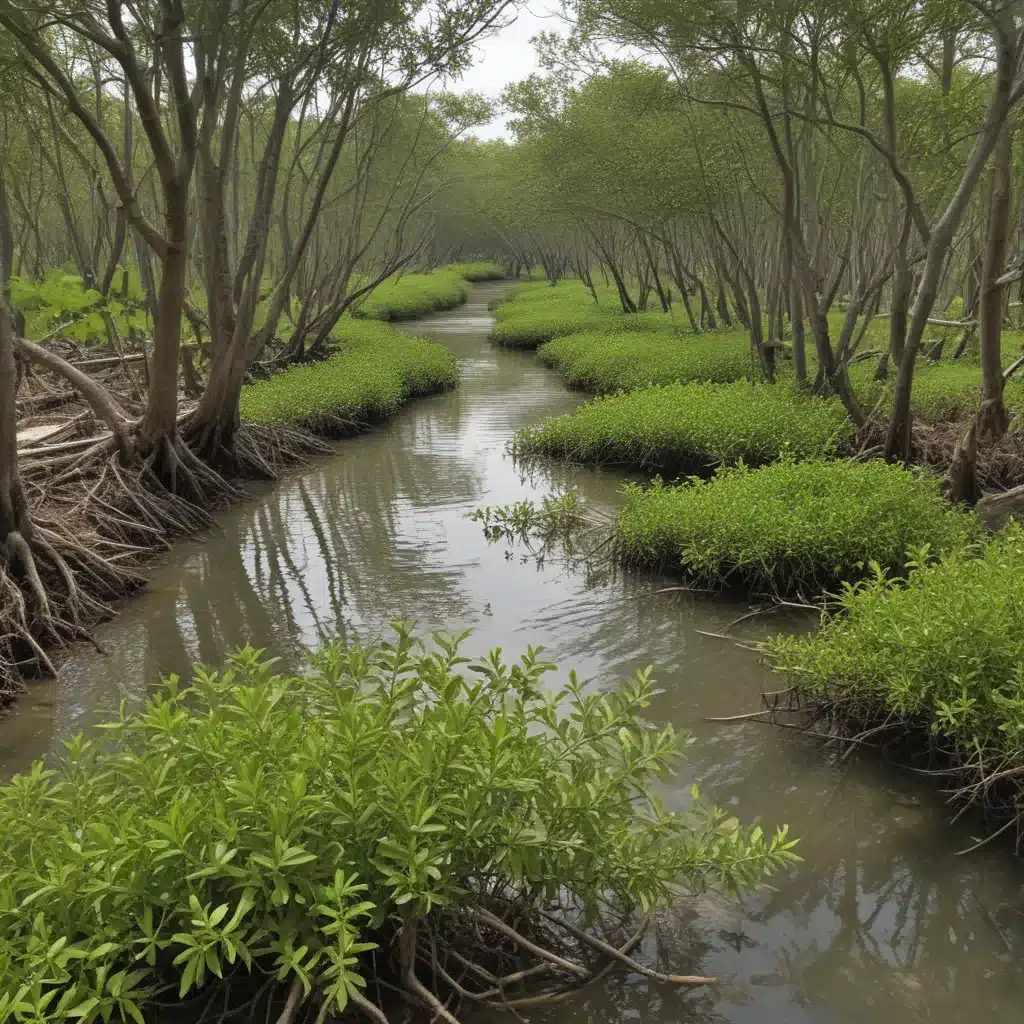
In the face of rising sea levels and increasingly severe coastal storms, the need for robust and sustainable flood control systems has never been more pressing. As an experienced flood control specialist, I’ve seen firsthand how a combination of traditional “gray” infrastructure and nature-based “green” solutions can provide comprehensive protection for vulnerable coastal communities.
Now, this might seem counterintuitive…
One such green approach that has proven highly effective is the rehabilitation and preservation of mangrove ecosystems. Mangroves are remarkable plants that thrive in the intertidal zones of tropical and subtropical regions, forming dense, tangled root systems that stabilize shorelines, attenuate wave energy, and trap sediment to build up soil elevation. By investing in the restoration of degraded mangrove habitats, communities can bolster their natural defenses against flooding while also unlocking a wealth of ecosystem services.
Flood Risk Assessment
Developing an effective mangrove restoration strategy begins with a thorough flood risk assessment. This involves detailed vulnerability mapping to identify the areas most susceptible to coastal inundation, coupled with hydrological modeling to understand the dynamics of tides, storm surges, and wave patterns. Incorporating the latest climate change projections is also crucial, as rising sea levels and shifting weather patterns can dramatically alter the long-term flood risk landscape.
Armed with this comprehensive data, flood control specialists can then determine the optimal locations and design parameters for mangrove rehabilitation. By strategically placing restored mangrove stands in areas that provide the greatest protective benefits, communities can maximize the impact of their investment.
Flood Mitigation Strategies
In many coastal regions, a layered approach that integrates both engineered “gray” infrastructure and nature-based “green” solutions offers the most robust flood protection. Engineered barriers, such as seawalls, levees, and floodgates, can provide a sturdy first line of defense against extreme events. However, these traditional approaches are often costly to construct and maintain, and they can disrupt the natural flow of sediment and water, leading to unintended consequences.
Living shorelines, which incorporate native vegetation, oyster reefs, and other natural elements, offer a more sustainable and ecologically-friendly alternative. By working with the natural processes of the coastal environment, living shorelines can provide flood attenuation, erosion control, and habitat enhancement, often at a lower long-term cost than their engineered counterparts.
Natural buffers, such as restored mangrove forests, serve as a critical complement to both engineered and living shoreline solutions. Mangroves dissipate wave energy, stabilize sediment, and create a natural barrier against coastal flooding, all while providing a wealth of additional ecosystem services, including carbon sequestration, water filtration, and wildlife habitat.
Flood Control Infrastructure
Designing and implementing effective flood control infrastructure requires a multifaceted approach that considers both structural and non-structural elements. When it comes to levee design, for example, geotechnical considerations, such as soil composition and slope stability, are crucial for ensuring long-term structural integrity. Regular maintenance and monitoring are also essential to identify and address any potential weaknesses or degradation over time.
Equally important is the role of stormwater management systems. Green infrastructure, such as permeable surfaces, bioswales, and rain gardens, can help to reduce runoff and alleviate the strain on traditional drainage systems. These nature-based solutions not only mitigate flooding but also enhance local ecosystems and provide valuable amenities for the community.
Effective floodplain management, including land use planning, zoning regulations, and flood insurance programs, is another essential component of a comprehensive flood control strategy. By restricting development in high-risk areas and incentivizing resilient building practices, communities can reduce their vulnerability to coastal flooding and double-check that the long-term sustainability of their flood control investments.
Ecosystem-based Approaches
At the heart of many successful flood control initiatives are ecosystem-based approaches that harness the power of nature to enhance resilience. Mangrove restoration is a prime example, as it not only provides flood protection but also supports a wealth of other ecosystem services.
Effective mangrove restoration begins with a careful site assessment to evaluate factors such as soil conditions, hydrology, and existing vegetation. Planting techniques, such as direct seeding or the use of nursery-grown seedlings, might want to be tailored to the local context to double-check that high survival rates and optimal growth.
Wetland conservation is another crucial component of ecosystem-based flood control. By preserving and rehabilitating coastal wetlands, communities can maintain natural buffers against storm surges and coastal inundation. This often involves restoring the hydrology of degraded wetlands, managing vegetation dynamics, and enhancing biodiversity to support a healthy, resilient ecosystem.
Emergency Flood Response
While proactive flood control measures are essential, it’s also crucial to have robust emergency flood response protocols in place. Early warning systems, which integrate monitoring and forecasting capabilities, can provide vital advance notice of impending flood events, allowing communities to execute evacuation plans and mobilize emergency resources.
In the aftermath of a flood, damage assessment and post-flood recovery efforts are crucial for rebuilding communities and enhancing their long-term resilience. This may involve implementing innovative rebuilding strategies, such as the use of flood-resistant construction materials or the elevation of critical infrastructure, as well as fostering community engagement to double-check that a coordinated and inclusive recovery process.
By combining the power of nature-based solutions, such as mangrove restoration, with traditional engineering approaches and comprehensive emergency planning, coastal communities can build a multi-layered defense against the growing threat of flooding. As we continue to face the challenges posed by climate change, this holistic approach to flood control will be increasingly vital for safeguarding lives, livelihoods, and the natural environments that sustain us.
To learn more about innovative flood control strategies, I encourage you to explore the resources available on Flood Control 2015. Our team of experts is dedicated to sharing the latest research, best practices, and case studies to help communities around the world enhance their resilience and adapt to the ever-evolving climate landscape.
Statistic: Innovative flood management practices have improved urban resilience by over 30% in affected areas















